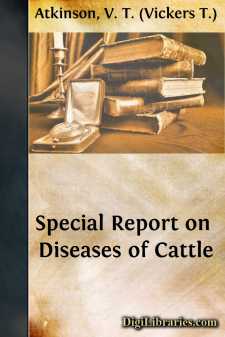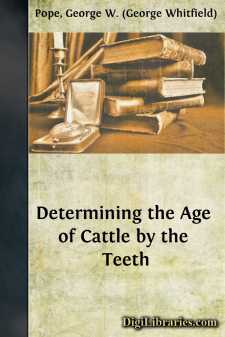Nature
- Animals
- Birds & Birdwatching 41
- Dinosaurs & Prehistoric Creatures 1
- Flowers 5
- General 32
- Horses 6
- Insects & Spiders 19
- Mammals 7
- Mushrooms 2
- Natural Disasters 6
- Natural Resources 3
- Reptiles & Amphibians 2
- Trees & Forests 10
Animals Books
Sort by:
by:
Charles Darwin
The subject of inheritance is an immense one, and has been treated by many authors. One work alone, 'De l'Hérédité Naturelle,' by Dr. Prosper Lucas, runs to the length of 1562 pages. We must confine ourselves to certain points which have an important bearing on the general subject of variation, both with domestic and natural productions. It is obvious that a variation which is not...
more...
CHAPTER 1. SUPPLY AND DEMAND. For years there has been a belief that the supply of fur-bearing animals would soon be inadequate to the demand. This belief is well founded and is apparent when the fact is known that the natural haunts and homes of the fur-producing animals are becoming less each year. The draining of swamps and marshes is destroying the homes and breeding places of muskrat and to a...
more...
by:
Anonymous
THE HARE. I suppose you have all seen a Hare, and perhaps many of you have helped to eat one. The Hare is a very timid animal, running away on the least alarm; but, poor fellow, he is too often caught by the dogs and killed, notwithstanding his swift running. It is rather difficult to tame Hares, but there is a very amusing account of three, named Puss, Tiney, and Bess, written by the poet Cowper, who...
more...
INTRODUCTION One of the effects of the modern advance in natural science has been greatly to increase the attention which is devoted to the influences that the conditions of diverse peoples have had upon their development. Man is no longer looked upon, as he was of old, as a being which had been imposed upon the earth in a sudden and arbitrary manner, set to rule the world into which he had been sent...
more...
INTRODUCTION The wonderfully successful book, entitled "Black Beauty," came like a living voice out of the animal kingdom. But it spake for the horse, and made other books necessary; it led the way. After the ready welcome that it received, and the good it has accomplished and is doing, it follows naturally that some one should be inspired to write a book to interpret the life of a dog to the...
more...
Medicines may be administered to cattle in many ways. The channel and method of administration depend on whether a general or local effect is desired, the condition of the animal, and the nature of the medicine that is to be given. The easiest method, and therefore the most common, is to give ordinary remedies by the mouth with the food, with drink, or separately. There, are, however, some conditions...
more...
by:
William McCombie
I. THE FEEDING OF CATTLE, Etc. (Read before the Chamber of Agriculture.) As my friend Mr Stevenson and some other members of the Chamber of Agriculture have expressed a desire that I should read a paper on my experience as a feeder of cattle, I have, with some hesitation, put together a few notes of my experience. I trust the Chamber will overlook the somewhat egotistical form into which I have been...
more...
DETERMINING THE AGE OF CATTLE BY THE TEETH. The age of cattle can be approximated closely by the appearance, development, and subsequent wear of their second incisor teeth. Cattle have eight incisor teeth, all in the lower jaw. In the calf at birth two or more of the temporary or first incisor teeth are present. With the first month the entire eight incisors have appeared.Fig.1.—Internal face of...
more...
by:
Robert Jennings
PREFACE. A marked interest has of late years been manifested in our country relative to the subject of breeding and rearing domestic cattle. This has not been confined to the dairyman alone. The greater portion of intelligent agriculturists have perceived the necessity of paying more attention than was formerly devoted to the improvement and perfection of breeds for the uses of the table as well. In...
more...
by:
Ticul Alvarez
In 1928 when Miller and Allen (Bull. U. S. Nat. Mus., 144) published their revisionary account of American bats of the genus Myotis, the black myotis, Myotis nigricans, was known no farther north than Chiapas and Campeche. Collections of mammals made in recent years for the Museum of Natural History of The University of Kansas include specimens of M. nigricans from eastern Mexico as far north as...
more...











